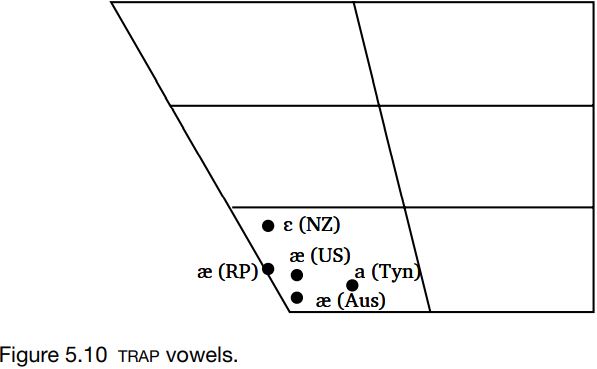

Grammar


Tenses


Present

Present Simple

Present Continuous

Present Perfect

Present Perfect Continuous


Past

Past Simple

Past Continuous

Past Perfect

Past Perfect Continuous


Future

Future Simple

Future Continuous

Future Perfect

Future Perfect Continuous


Parts Of Speech


Nouns

Countable and uncountable nouns

Verbal nouns

Singular and Plural nouns

Proper nouns

Nouns gender

Nouns definition

Concrete nouns

Abstract nouns

Common nouns

Collective nouns

Definition Of Nouns

Animate and Inanimate nouns

Nouns


Verbs

Stative and dynamic verbs

Finite and nonfinite verbs

To be verbs

Transitive and intransitive verbs

Auxiliary verbs

Modal verbs

Regular and irregular verbs

Action verbs

Verbs


Adverbs

Relative adverbs

Interrogative adverbs

Adverbs of time

Adverbs of place

Adverbs of reason

Adverbs of quantity

Adverbs of manner

Adverbs of frequency

Adverbs of affirmation

Adverbs


Adjectives

Quantitative adjective

Proper adjective

Possessive adjective

Numeral adjective

Interrogative adjective

Distributive adjective

Descriptive adjective

Demonstrative adjective


Pronouns

Subject pronoun

Relative pronoun

Reflexive pronoun

Reciprocal pronoun

Possessive pronoun

Personal pronoun

Interrogative pronoun

Indefinite pronoun

Emphatic pronoun

Distributive pronoun

Demonstrative pronoun

Pronouns


Pre Position


Preposition by function

Time preposition

Reason preposition

Possession preposition

Place preposition

Phrases preposition

Origin preposition

Measure preposition

Direction preposition

Contrast preposition

Agent preposition


Preposition by construction

Simple preposition

Phrase preposition

Double preposition

Compound preposition

prepositions


Conjunctions

Subordinating conjunction

Correlative conjunction

Coordinating conjunction

Conjunctive adverbs

conjunctions


Interjections

Express calling interjection

Phrases

Sentences


Grammar Rules

Passive and Active

Preference

Requests and offers

wishes

Be used to

Some and any

Could have done

Describing people

Giving advices

Possession

Comparative and superlative

Giving Reason

Making Suggestions

Apologizing

Forming questions

Since and for

Directions

Obligation

Adverbials

invitation

Articles

Imaginary condition

Zero conditional

First conditional

Second conditional

Third conditional

Reported speech

Demonstratives

Determiners


Linguistics

Phonetics

Phonology

Linguistics fields

Syntax

Morphology

Semantics

pragmatics

History

Writing

Grammar

Phonetics and Phonology

Semiotics


Reading Comprehension

Elementary

Intermediate

Advanced


Teaching Methods

Teaching Strategies

Assessment
The TRAP vowel
المؤلف:
Richard Ogden
المصدر:
An Introduction to English Phonetics
الجزء والصفحة:
72-5
23-6-2022
928
The TRAP vowel
The trap vowel varies along the front–back and open–close dimensions and is variously transcribed as [a æ ε]. What cannot be shown from the vowel quadrilateral so easily is the differences in duration. In the USA, this vowel is regularly long in duration in comparison with other varieties of English.
The symbol [æ] stands for three different qualities: most open in Australia, closest and frontest in RP and most central in American English. If we wanted to distinguish these qualities while using the same symbol, we could elaborate the transcriptions with diacritics. ‘Closer’ and ‘more open’ are handled with  respectively; ‘fronter’ and ‘backer’ with [+], [-]. Vowels shifted to the centre of the quadrilateral can be marked with
respectively; ‘fronter’ and ‘backer’ with [+], [-]. Vowels shifted to the centre of the quadrilateral can be marked with  . So we could write
. So we could write  for RP,
for RP,  for Australian and [æ] for American. This transcription style is comparative. Another strategy would be to refer the qualities directly to CVs, in which case we might transcribe RP as
for Australian and [æ] for American. This transcription style is comparative. Another strategy would be to refer the qualities directly to CVs, in which case we might transcribe RP as  (i.e. more open than CV3, [ε]), Australian as [a] (close to CV4) and American as [ä] (more centralized than CV4, [a]). This transcription style is more impressionistic. It is precisely because of the problems of deciding which symbol to use that phoneticians use graphs to plot where vowels lie, even if this is just an approximation.
(i.e. more open than CV3, [ε]), Australian as [a] (close to CV4) and American as [ä] (more centralized than CV4, [a]). This transcription style is more impressionistic. It is precisely because of the problems of deciding which symbol to use that phoneticians use graphs to plot where vowels lie, even if this is just an approximation.

 الاكثر قراءة في Phonetics
الاكثر قراءة في Phonetics
 اخر الاخبار
اخر الاخبار
اخبار العتبة العباسية المقدسة

الآخبار الصحية















 قسم الشؤون الفكرية يصدر كتاباً يوثق تاريخ السدانة في العتبة العباسية المقدسة
قسم الشؤون الفكرية يصدر كتاباً يوثق تاريخ السدانة في العتبة العباسية المقدسة "المهمة".. إصدار قصصي يوثّق القصص الفائزة في مسابقة فتوى الدفاع المقدسة للقصة القصيرة
"المهمة".. إصدار قصصي يوثّق القصص الفائزة في مسابقة فتوى الدفاع المقدسة للقصة القصيرة (نوافذ).. إصدار أدبي يوثق القصص الفائزة في مسابقة الإمام العسكري (عليه السلام)
(نوافذ).. إصدار أدبي يوثق القصص الفائزة في مسابقة الإمام العسكري (عليه السلام)


















